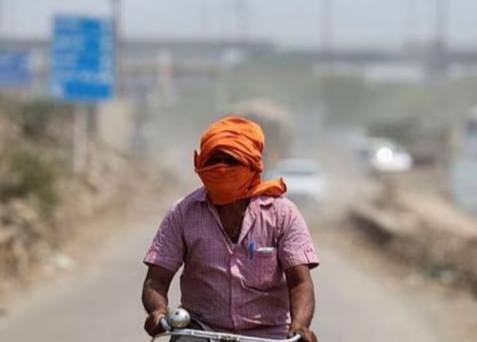
Extreme Heat Endangering Health & Productivity of Workers: Report
As the world grapples with the ongoing climate crisis, a recent report by the World Health Organisation (WHO) and the World Meteorological Organisation (WMO) has sounded the alarm on the alarming impact of extreme heat on the health and productivity of workers. According to the report, worker productivity drops by 2-3% for every degree above 20°C, leading to significant economic losses and health risks for vulnerable populations.
The report, which was released on [Date], highlights the devastating effects of heatwaves on manual workers in agriculture, construction, and other sectors. These workers, who are already exposed to physically demanding jobs, are at a higher risk of heat-related illnesses and injuries due to the extreme temperatures. Furthermore, the report notes that vulnerable populations such as children and the elderly in developing countries are disproportionately affected by heatwaves.
Heatwaves are becoming increasingly common and severe due to climate change, with temperatures soaring to record highs in many parts of the world. According to the report, heatwaves are expected to become more frequent and intense in the coming years, posing a significant threat to global health and productivity.
Health Risks Associated with Heatwaves
The report highlights several health risks associated with heatwaves, including:
- Heatstroke: A potentially life-threatening condition that occurs when the body’s temperature regulation system is overloaded, leading to a rapid rise in body temperature.
- Dehydration: A condition that occurs when the body loses more fluids than it takes in, leading to a range of symptoms including headaches, fatigue, and dizziness.
- Kidney dysfunction: Prolonged exposure to high temperatures can damage the kidneys, leading to long-term health problems.
Impact on Productivity and Economy
The report estimates that heatwaves can lead to significant economic losses due to reduced productivity and increased healthcare costs. In addition, the report notes that heatwaves can also lead to increased absenteeism, reduced work hours, and decreased morale among workers.
Vulnerable Populations at Risk
The report highlights several vulnerable populations that are at risk of heat-related illnesses and injuries, including:
- Children: Children are more susceptible to heat-related illnesses due to their smaller body size and immature temperature regulation system.
- Elderly: Older adults are more susceptible to heat-related illnesses due to age-related changes in the body’s ability to regulate temperature.
- Manual workers: Workers in agriculture, construction, and other physically demanding jobs are more susceptible to heat-related illnesses due to their physical exertion and prolonged exposure to high temperatures.
- Developing countries: Developing countries are more vulnerable to heatwaves due to limited access to healthcare, infrastructure, and resources.
Recommendations and Mitigation Strategies
The report provides several recommendations and mitigation strategies to reduce the impact of heatwaves on workers and vulnerable populations, including:
- Heat stress prevention: Implementing heat stress prevention measures such as providing cooling breaks, implementing heat stress policies, and providing personal protective equipment.
- Heatwave early warning systems: Establishing heatwave early warning systems to alert workers and vulnerable populations of impending heatwaves.
- Public awareness campaigns: Conducting public awareness campaigns to educate workers and vulnerable populations on the risks associated with heatwaves and how to prevent heat-related illnesses.
- Infrastructure development: Investing in infrastructure development to provide shade, ventilation, and cooling systems in workplaces and public spaces.
Conclusion
The report by the WHO and WMO highlights the alarming impact of extreme heat on the health and productivity of workers. With temperatures expected to continue rising due to climate change, it is essential that we take immediate action to reduce the risks associated with heatwaves. By implementing heat stress prevention measures, establishing heatwave early warning systems, conducting public awareness campaigns, and investing in infrastructure development, we can reduce the impact of heatwaves on workers and vulnerable populations.
Source:
https://repository.inshorts.com/articles/en/PTI/45d9bd2d-ff57-417c-9e5f-831344bb34b0






